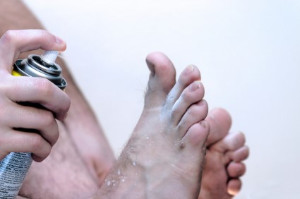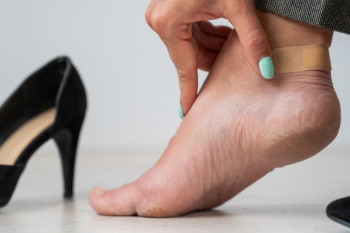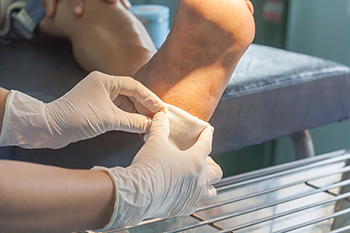
Athlete's foot, a common fungal infection, thrives in warm, moist environments like locker rooms and swimming pools. Symptoms include itching, burning, and cracked, peeling skin between toes. To prevent it, keep your feet clean and dry, wear breathable footwear, and avoid walking barefoot in public areas. Treatment options range from over-the-counter antifungal creams and powders to prescription medications for persistent infections. Maintaining good foot hygiene, such as washing feet daily and drying them thoroughly, is important. If symptoms persist or worsen despite self-care measures, a podiatrist can confirm the diagnosis, recommend appropriate medications, and provide tips to prevent recurrence. Prompt treatment not only alleviates discomfort but also prevents the spread of the infection to other parts of the body or to others. If you suffer from athlete’s foot, it is suggested you make an appointment with a podiatrist for a treatment plan.
Athlete’s foot is an inconvenient condition that can be easily reduced with the proper treatment. If you have any concerns about your feet and ankles, contact one of our podiatrists from Comprehensive Foot & Ankle Center of South Jersey. Our doctors will treat your foot and ankle needs.
Athlete’s Foot: The Sole Story
Athlete's foot, also known as tinea pedis, can be an extremely contagious foot infection. It is commonly contracted in public changing areas and bathrooms, dormitory style living quarters, around locker rooms and public swimming pools, or anywhere your feet often come into contact with other people.
Solutions to Combat Athlete’s Foot
- Hydrate your feet by using lotion
- Exfoliate
- Buff off nails
- Use of anti-fungal products
- Examine your feet and visit your doctor if any suspicious blisters or cuts develop
Athlete’s foot can cause many irritating symptoms such as dry and flaking skin, itching, and redness. Some more severe symptoms can include bleeding and cracked skin, intense itching and burning, and even pain when walking. In the worst cases, Athlete’s foot can cause blistering as well. Speak to your podiatrist for a better understanding of the different causes of Athlete’s foot, as well as help in determining which treatment options are best for you.
If you have any questions please feel free to contact our offices located in Cherry Hill, Voorhees, Atco, and Turnersville, NJ . We offer the newest diagnostic and treatment technologies for all your foot and ankle needs.

 An ingrown toenail
An ingrown toenail


